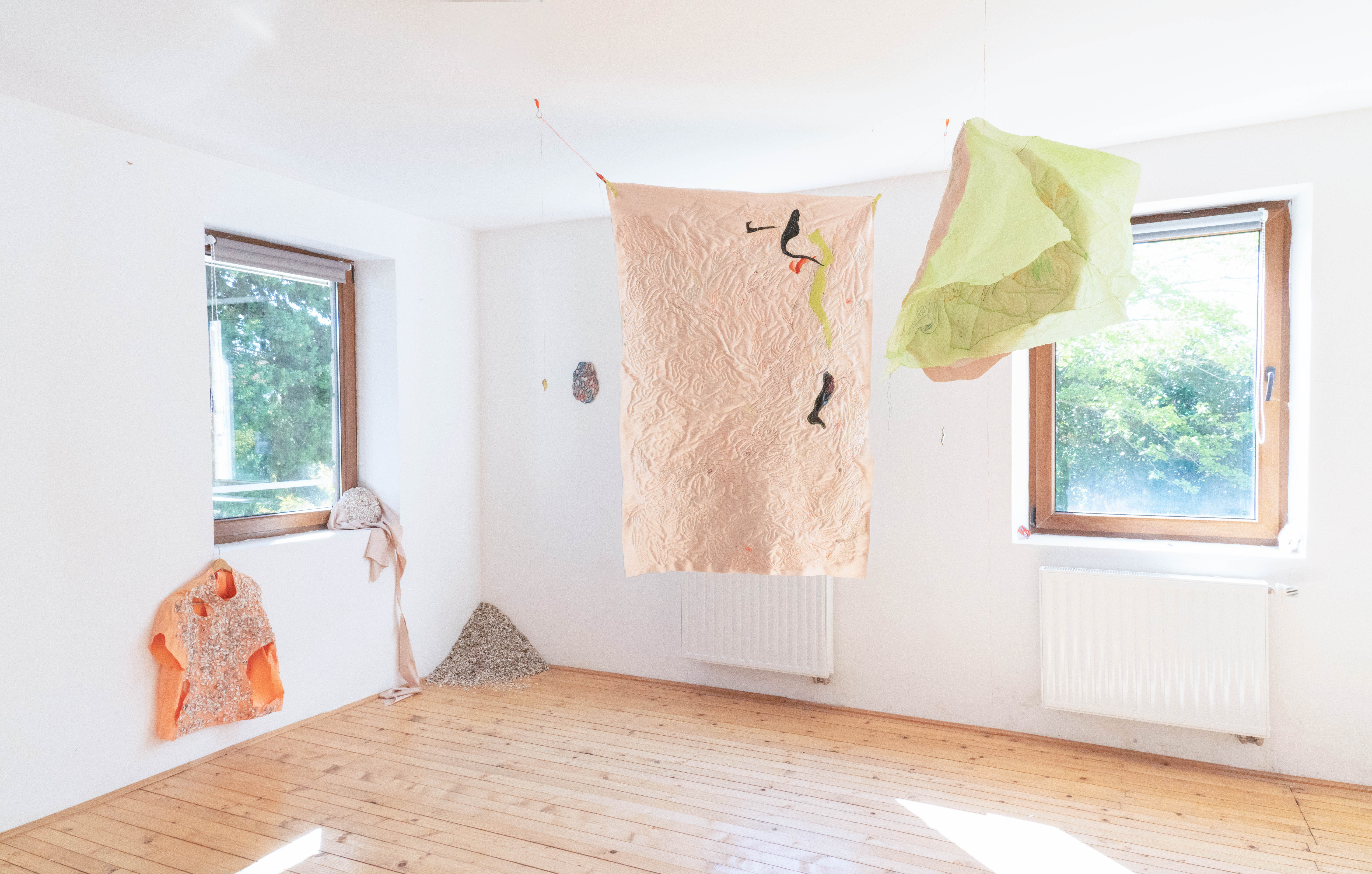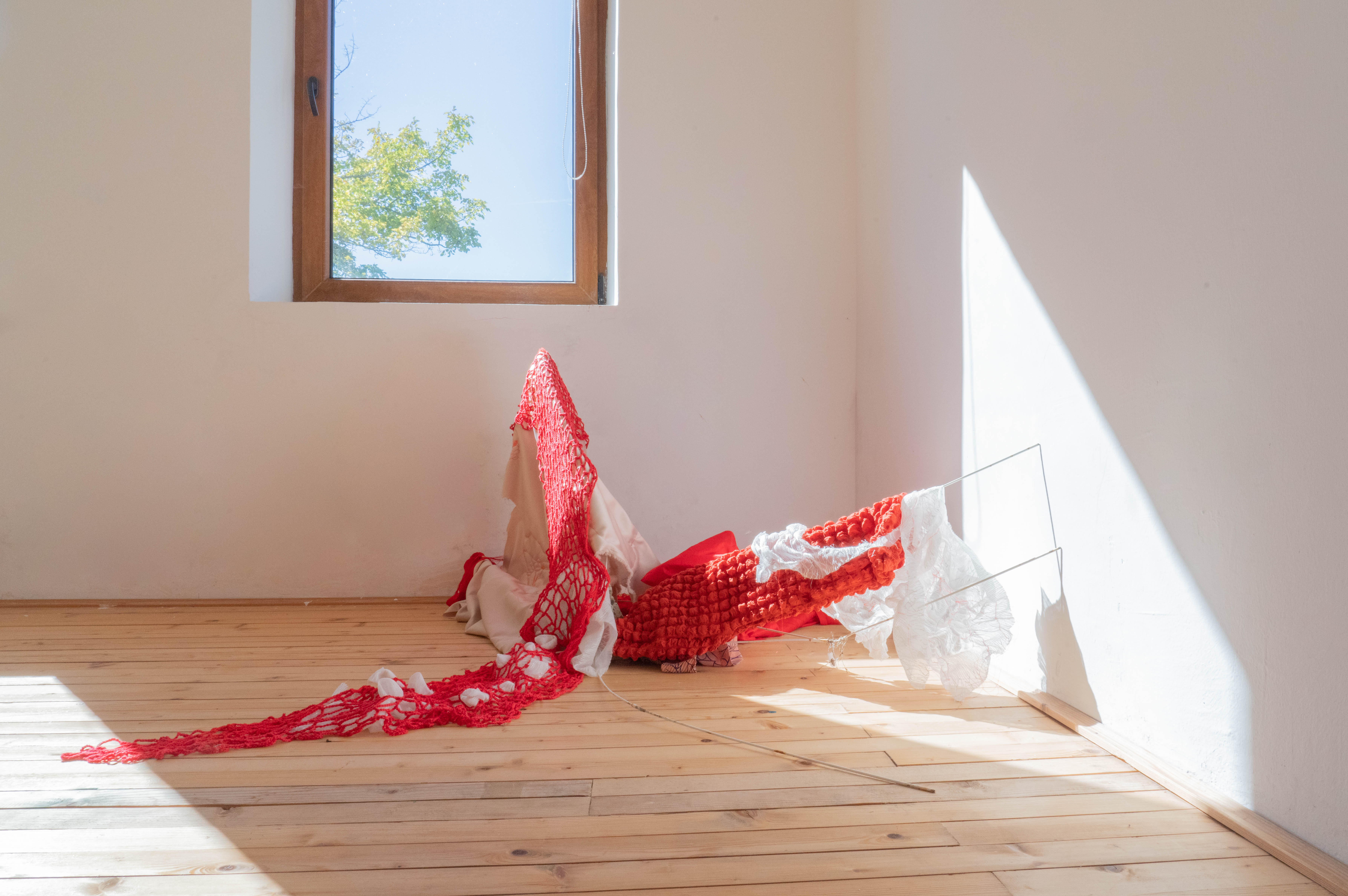the scene is fluid, 2022
- short film, ceramic sculptures, quilts, sculptural costumes
- developed within KAMEN Artist Residency with the help of Amarte Fonds and Pictoright
the scene is fluid is a recently developed work that resulted from a wider research into our relationships with the ocean and its aquatic ecosystems. In this research the knowledge and values on which we as humans base this relationship are explored and questioned. Additionally, it asks the question of how fiction, performance and costuming can function as tools to weave current oceanic crises and global warming together, while providing the means by which to care for - and relate to - the ocean and those most affected by oceanic crises.
the scene is fluid responds to this research by taking shape as an assemblage of sculptural costumes and a video-poem that narrates questions concerning surface and transformation in a non-linear way. Surfaces of the landscape and its inhabitants -like the bottom of the lake, reflections on the water and animals - find their way into the works. The project focuses on two species of the area of the Bileca lake: the Proteus Anguinus (endemic and endangered cave salamander) and the Quagga-mussel (invasive species). Both animal species live within the same natural landscape of the man-made lake providing Bosnia & Herzegovina with hydroelectric energy. To intuitively unpack how these species relate to the environment and each other, costuming is used as a tool. How does this endemic, endangered salamander which can only survive in specific (clean) chemical circumstances, relate to the invasive and flourishing mussel?
Puffed up textile and paper are held together by meandering lines of stitching, which can be seen as narrative lines, a body’s veins, or nerves for sensing. The skin-like fabrics invite a potential wearer, and the viewer, into a process of ‘becoming-other’ and an experience of ‘embodied estrangement’. This suggestion of transformation continues in the video work by means of digital layering and superimposition.
Through evolution, the Proteus salamander (also known as the human-fish) moved from the Adriatic Sea into the caves. Its body and brain adapted, responding to the stresses of its changing habitat. It got rid of its eyes and evolved a highly sensitive skin. The salamander senses its dark environment by magnetic fields, sound waves and temperature changes. This highly complex nervous system is a mediator between the organism itself and its environment. The video-poem zooms in on this specific way to sense a surrounding, and on finding direction in a destabilized environment. How to be at ease in a not-knowing, foggy and dwelling world, trusting intuition and instinct?
Several feet above the cave-salamander, we find the Quagga-mussel with its hard shell which the soft creature inhabits. Due to its abundant presence on shores and rocks there is no way of hiding from this creature. The mussels cut your feet and grow on everything they can reach, covering the surface of the landscape. The video-poem explores how this plurality conjoins with dissolving into the landscape, or perhaps claiming the landscape. The works of the scene is fluid consider the bodies and senses of these living creatures as situated answers to the question of how to perceive the world.
(exhibition documentation and textual input by Temra Pavlovic from KAMEN Artist Residency, and Esther van der Heijden)

Exhibition view No Man’s Art Gallery, 2023


















